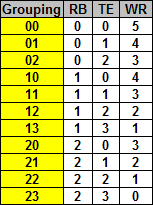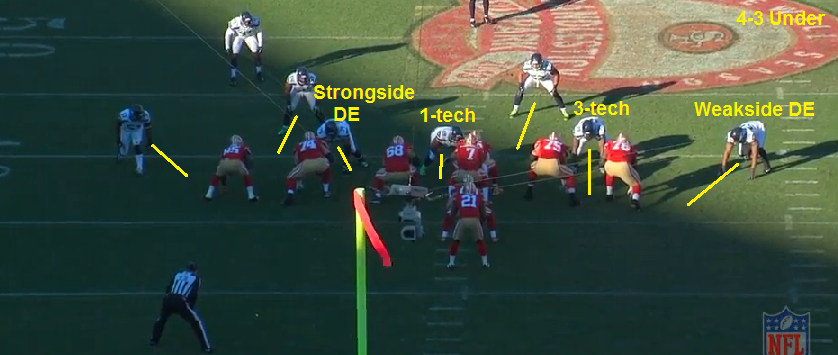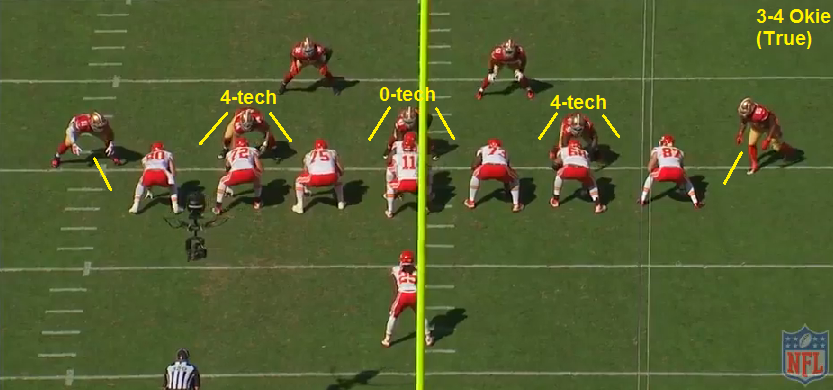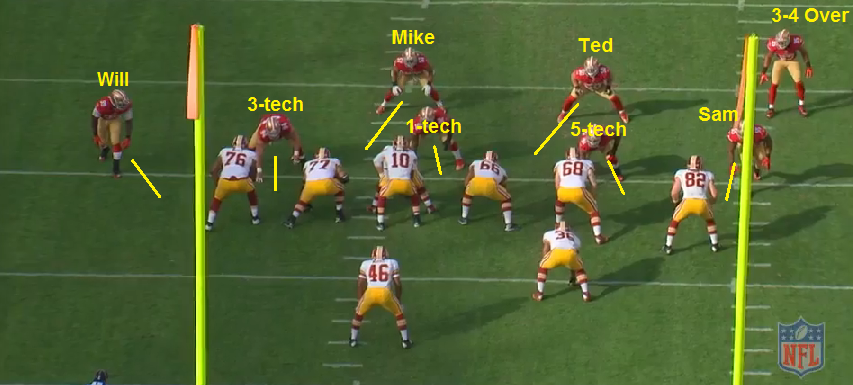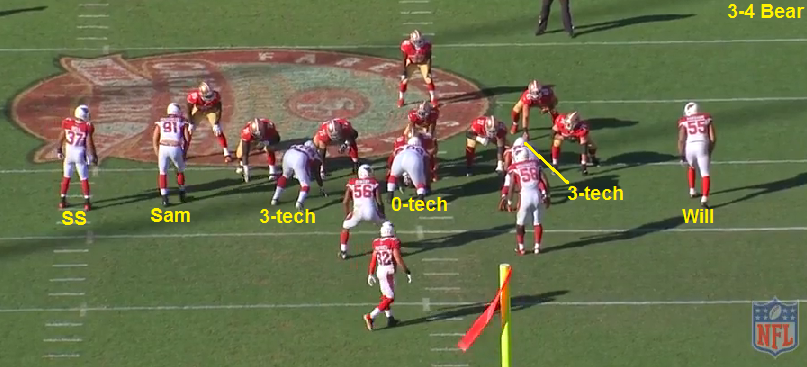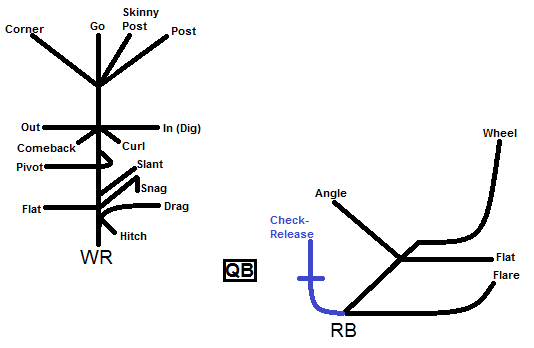Glossary
Strongside - the side of the formation with more offensive players. An offense can line up in a balanced formation with two WRs on each side with a RB directly behind the QB.
Weakside - the side of the formation with less route runners.
Field side - based on where the ball is placed on the hash marks, the Field side is the side of the football field with more space. This can influence which side of the formation the offense will determine as the playside
Boundary side - based on where the ball is placed on the hash marks, the Boundary side is the side of the football field with less space
'Reduced' split - a description of how far away the WR is lined up from the offensive tackle. This can determine how the CB plays the WR. A reduced split means the WR is inside the numbers on the field.
'Plus' split - a description of how far away the WR is lined up from the offensive tackle. This can determine how the CB plays the WR. A plus split means the WR is outside the numbers on the field.
MOFC (Middle of Field Closed) - Term for describing the middle of the field with regards to the deep zones. MOFC deep shells consists of: Cover 1, Cover 3, Tampa 2. This is an important pre-snap read for QBs and WRs running vertical routes that need to be adjusted depending on this read.
MOFO (Middle of Field Open) - Term for describing the middle of the field with regards to the deep zones. MOFO deep shells consists of: Cover 0, Cover 2, Cover 4. This is an important pre-snap read for QBs and WRs running vertical routes that need to be adjusted depending on this read.
Coverage shell - used to describe the coverage of the deep zone defenders. e.g.: Cover 3 and Fire Zone Blitz is a 3 deep coverage shell.
Zone Blitz - 5 or more pass rushers backed up with zone defense in coverage
Match - to identify the man coverage assignment when pattern matching
Check Release - an assignment to first check for a blitz and pick up the blitzer if there is one. If there is no blitzer, then release into a pass route. Typically a RB's assignment.
EMLOS - End Man on Line of Scrimmage. The inline players that are at the bookends of the line of scrimmage. This applies to both offense and defense, and is identified in both the running and passing game. Defensive EMLOS are identified to determine blocks in the running game. Offensive EMLOS can be primary keys for defenders (a safety may key the offensive EMLOS to determine run/pass).
Playside - the side of the formation (side of the Center) that the run play is designed to go. This is not the same as strongside/weakside.
Backside - the side of the formation that the run play is not designed to go towards
Force run defender - the run defender assigned to making sure the ball carrier does not get outside of him. He must turn the run inside and not get outflanked by the ball carrier.
Kickout block - run block applied on the Force run defender by an offensive player
Bunch formation - multiple WRs that are lined up within a yard of one another. This is used to combat man coverage as defenders in man coverage will give space to prevent from getting picked.
Stacked WRs - when multiple WRs are lined up one behind the other. This is another method to bunch WRs, but is designed specifically to earn space for the WR that is in the back.
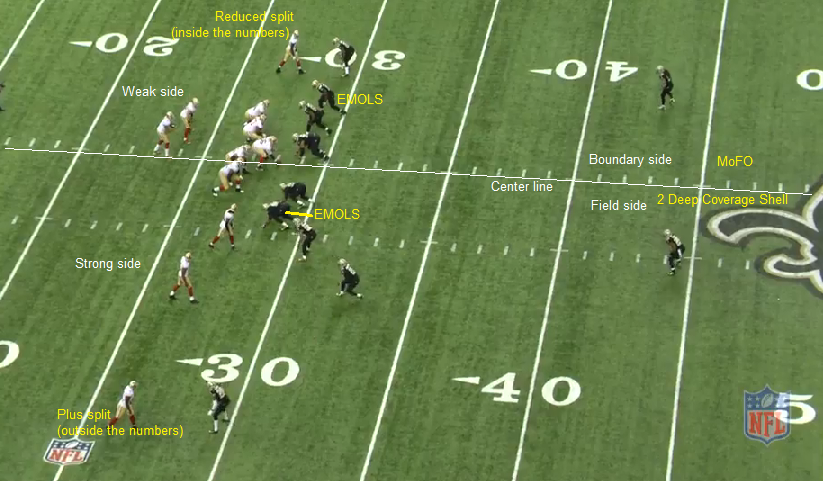
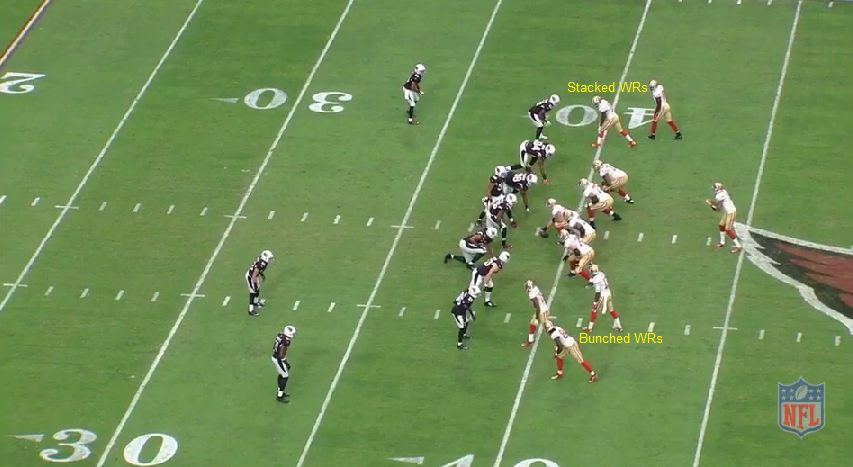 Position abbreviations
Position abbreviations
QB: quarterback
RB: running back
FB: fullback
TE: tight end
WR: wide receiver
C: center
LT/RT: left/right offensive tackle
LG/RG: left/right guard
DE: defensive end
DT: defensive tackle
NT: nose tackle
LB: linebacker
Will: weakside outside LB
Mike: middle LB; weakside 3-4 inside LB
Sam: strongside outside LB
Ted: strongside 3-4 inside LB
CB: cornerback
SS: strong safety
FS: free safety
